Quilt Market & thoughts on the sewing industry
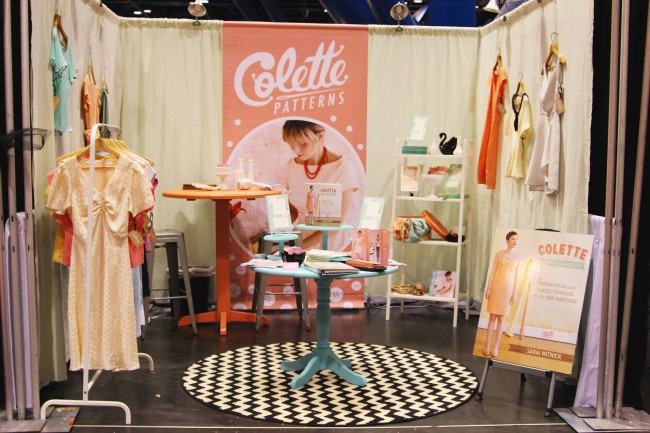
Quilt Market was intense. It was hard, but gave me a serious education and some food for thought.
On our end, designing, shipping, and building a booth in an unfamiliar city is an incredible amount of work. Our booth was pretty modest, but still, we worked hard on this thing. During the whole market, we were pretty much working from the moment we got up in the morning until we crawled into bed. It was tough.
Our booth came together quite well, though. I’m pretty proud of what we pulled off on a limited budget and even more limited know-how. My experience styling sets for photo shoots definitely came in handy, and I was able to reuse a lot of props and dress things up with pretty supermarket flowers.
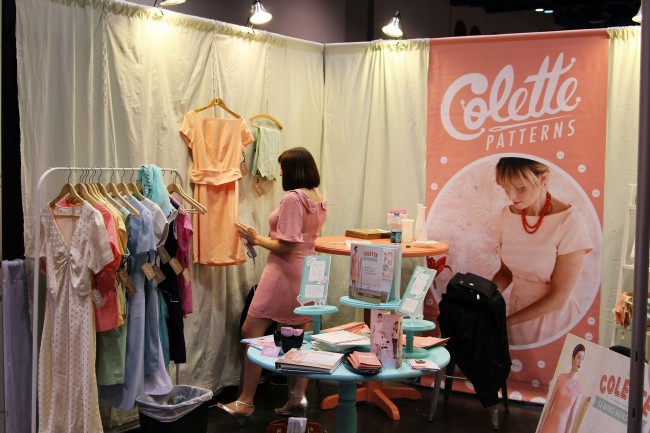

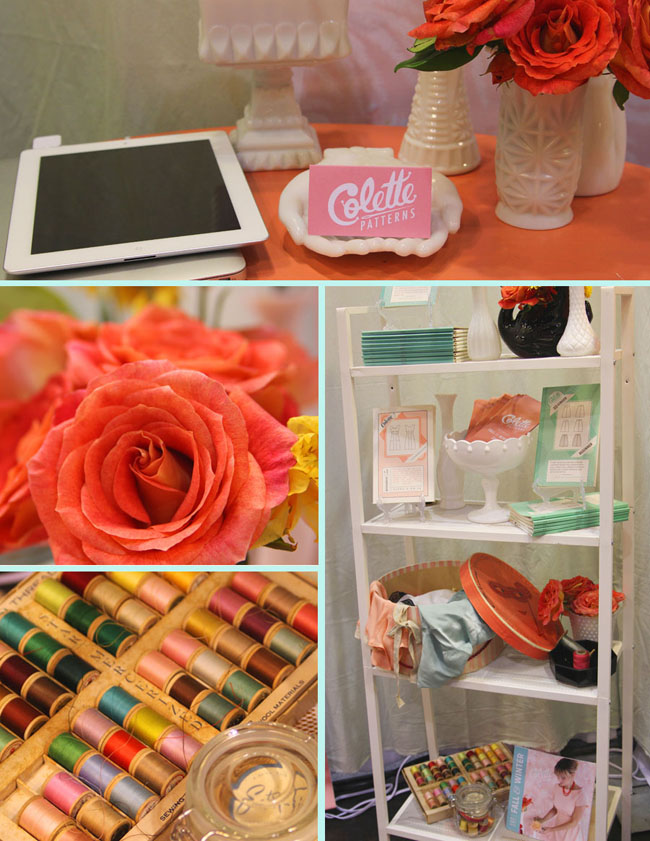
I think just looking at it, you get a sense of all the work that goes into something like this. The trips to Home Depot. The trips to Ikea. The hours spray painting. The design of all that marketing material. There is so much to plan and consider, so many decisions to be made.
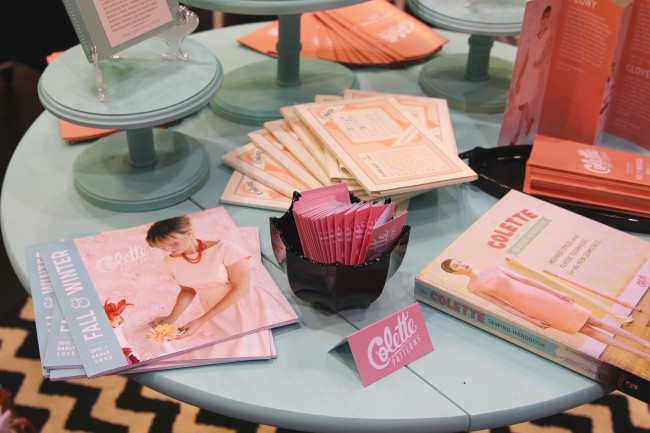
The best part of Market was definitely all the amazing people I was able to meet. Some of the ladies from Burdastyle, Diana Rupp, Brett Bara, Kim from True Up, many of the incredible retailers I’d only ever talked with via email (including many from outside the US), women who’ve been running shops for decades, and women who are planning to open new shops and sewing spaces. And I was starstruck when I finally got to meet Amy Butler, a definite entrepreneurial and creative hero. She was such a lovely and gracious woman, and her new fabric collection is just as lovely. I love the ikat.
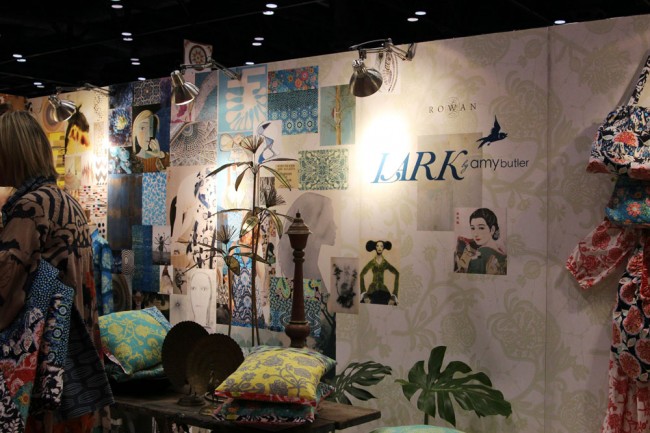
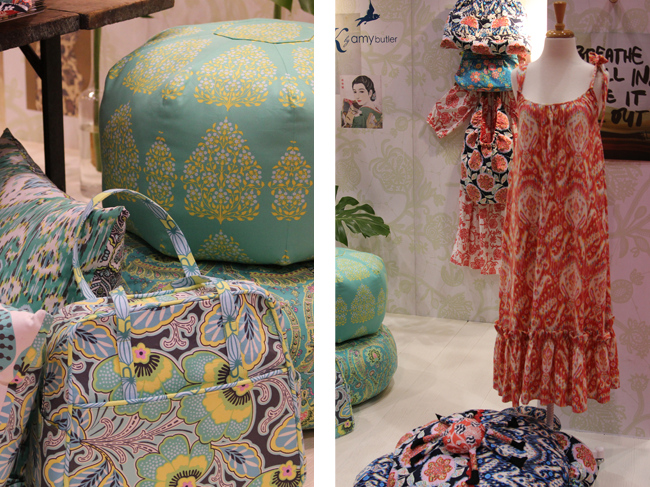
I also gave a little talk to shop owners about my book, and how they could use it to teach classes and inspire new people to sew. Here I am talking while Vanessa The Editor holds up a skirt.
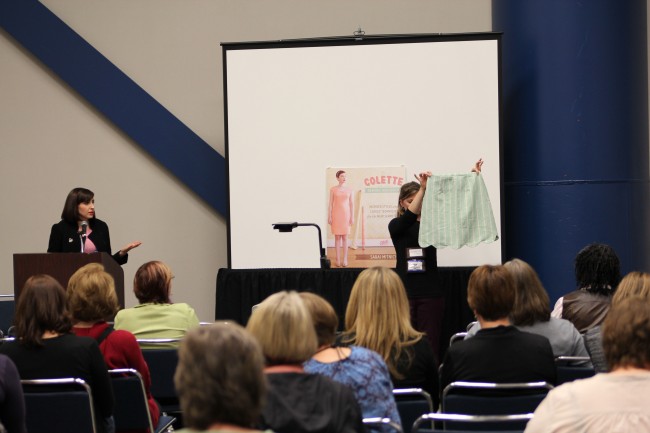

Afterwards, Kenn gave me a red velvet macaron to celebrate a successful presentation. Delish.
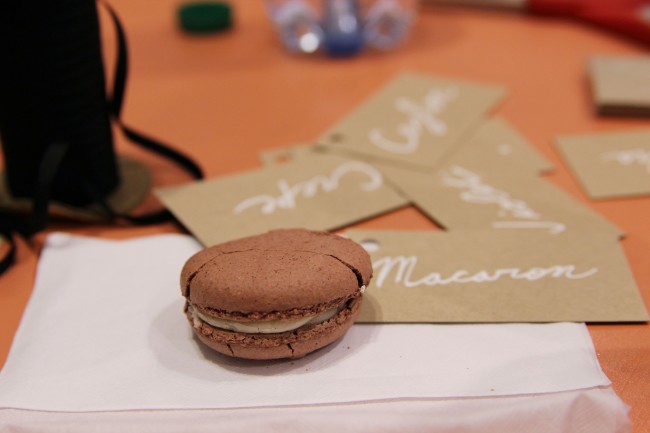
What was most interesting from my point of view was the clear schism between “quilting” and “sewing”. I’m using the terminology I heard at market here, where “sewing” was used to presumably mean forms of sewing other than making quilts. There seems to be a considerable gap between the two worlds, and I’d venture to say that the time is ripe for more sewing studios and shops that cater to all forms of sewing, including quilting.
I don’t want to give the impression that I felt excluded, because the response from everyone I talked to was tremendously enthusiastic, and in fact people were extremely kind. But there were many people I did not talk to, who I think were definitely not interested in anything to do with “sewing”.
My impression is that crafty women today (and I include myself) are interested in all kinds of handmade stuff, including clothes, items for their homes (like quilts), food, gardens, you name it. It’s all about bringing the magic of the homemade into every aspect of our lives, of living a life of creativity and meaning, of renewing and reinvigorating a range of traditions. To me, garment sewing is just one part of that, albeit an important one for me.
But from my perspective, I want to help facilitate that creativity, and I recognize that we all have different ways of being creative every day. It isn’t about “garment sewing vs. quilting” to me. They’re all a part of the same need.
And that’s why it makes so much sense to me that there are all of these new sewing shops and spaces opening these days that embrace a real range of handcrafts, from quilting to garment sewing to making toys or anything else with textiles. But it seems like many of the older quilt shops aren’t embracing this approach, because they believe that their customers are only interested in quilting. I don’t know if that’s true or not, but that is their perspective and I’m sure they know their customers. Perhaps “quilters” and “sewers” really do want different things, I don’t know.
What do you think? Do you think of sewing as just one of many creative outlets in your life? Do you enjoy different kinds of sewing, other than just making clothes? I’m really curious if, like me, you love clothes but are interested in the handmade in other aspects of life as well.
Some related posts you may be interested in:
- Planning our booth: Some of the “before” photos as wel planned and constructed our booth.

 Sign In
Sign In

Comments
Christina
November 17, 2011 #
I learned to sew by making clothes, somewhere between 12 and 14. I picked up quilting at 17, and quilts really became my focus for a long time. I came back to sewing clothing after my daughter was born, making dresses and Halloween costumes for her. Then I added in shirts for my husband. I’ve only fairly recently come around again to making clothes for myself. I’m working on a post at my blog that (I think) will detail my journey.
As for stores, I find I’m shopping at a wider variety of fabric sources these days. I love stores that are focused on quilting when I’m working on a quilt, but also for some fashion choices. I have made skirts from quilting batiks; my husband picks loud Japanese print quilting fabric for shirts. But some clothing sewing projects need fabrics that are not quilting fabrics, like knits or satins or woolens, and I’m still looking for my favorite source for these fabrics. The all-in-one stores don’t seem to have enough variety of either the quilting fabrics or the fashion fabrics. Perhaps when I’m more confident about my fashion sewing, I’ll be able to explore acquiring fabric online. Right now, I need to be able to touch the fabric!
Lucinda
December 6, 2012 #
I’m a new follower to your blog and enjoy it. I am more quilter than garment maker but I would like to be a better garment maker. It is hard to find local places where that can happen. I think you’re right about the older, traditional quilt shops that want to keep things under control and the same as they have always been. Sad – both for modern quilting and garment making.